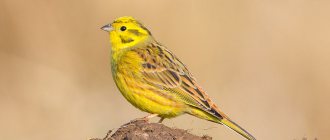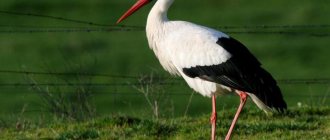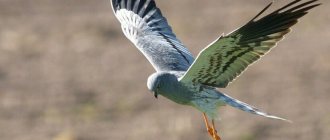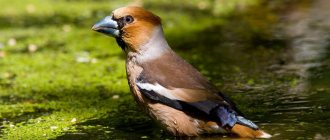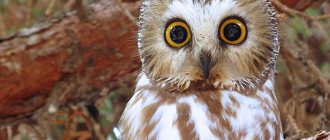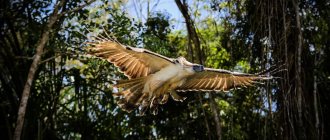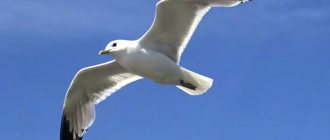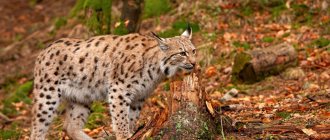For several hundred years, peacocks have been considered the most beautiful and majestic birds on the planet. This bird with a long beautiful tail is called royal in a number of countries. Peacocks gained their popularity for their unique tails, the plumage of which bears intricate patterns. However, not everyone knows that this bird with a beautiful tail is a close relative of the most common chicken, which is found in almost every rural farmstead.
Although this beauty is mostly found in the east, it got its name from the French. The name of the bird with a beautiful tail comes from the French pavilio, which literally means “tent.” The peacock received this name for its tail, which, when spread, resembles a tent.
It is noteworthy that the peacock gained its fame not only for its interesting plumage, but also for some other features, thanks to which it began to be domesticated. In this article we will tell you what a bird with a beautiful tail is called in different countries, and also tell you about the peculiarities of its life and habitat.
Long-tailed velvet weaver
Long-tailed velvet weavers (Euplectes progne) are South African birds, so named because of their almost entirely black coloration and, of course, their extremely long tail. Their six to eight tail feathers grow to more than 50 centimeters—about three times the bird's body length. In this original way, the males of this species demonstrate their health and physical fitness.
Researchers have found that male birds with longer tails are more popular with females.
Livingston's bananaeater
Based on the bird's name, its favorite treat should definitely be bananas, but it eats berries, insects and young shoots of plants, and the name is simply misleading. The distinctive features of this bird are a bright green crest with a white tip and a long tail. And the rich color, combining brilliant green, violet, blue, purple and red, is able to attract many glances. The amazing appearance of the bird evokes thoughts of something fabulous, especially when it bathes in the sun’s rays, shimmering like precious stones.
Banana eaters live in pairs or small groups. They are distinguished by tolerance towards representatives of other species, as well as an unfriendly attitude towards their relatives from neighboring groups, which is manifested in the fierce defense of their territory from them.
In captivity, the miniature bird manifests itself as a calm and friendly creature and easily gets used to humans.
Thick-billed Azure Magpie
The thick-billed azure magpie (Urocissa caerulea) belongs to the crow family. However, unlike its counterparts, it is a brighter bird. The charming azure magpie is not afraid of people.
It is a symbol of Taiwan, so in foreign literature this bird is often called the Taiwanese magpie.
They are usually found in groups of six or more and hop along tree branches in the forest. They are widely known scavengers and omnivores. Their diet includes snakes, rodents, small insects, plants, fruits and seeds. Their favorite foods are wild figs and papaya. They hide the leftover food on the ground, covering it with leaves, so that they can return and finish the meal in the future.
The azure magpie is monogamous. Females incubate the eggs, and males help build nests and feed. Magpies are fiercely protective of their nests and will mercilessly attack intruders until they retreat.
WHERE DOES IT LIVE?
In Europe, the redstart lives in light mixed forests, and in Africa and Asia Minor it also inhabits mountain forests. She leaves rocky places and rocks near mountain meadows to a close relative - the black redstart.
In some gardens both species of these birds coexist. Among the redstart's favorite places to live are old parks and alleys, where there are many old hollow trees. In Berlin, redstarts have colonized city parks, gardens and cemeteries. Nowadays, urban populations of redstarts exceed those in suburban forests. At the end of August, redstarts begin to prepare to fly to warm Africa. The winter is spent in countries located south of the Sahara.
Astrapia
When talking about birds with beautiful plumage, one cannot fail to mention the astrapia mayeri. Males grow two unusually long tail feathers. They can grow up to 91 cm in length. The astrapia has the longest tail feathers in relation to body size.
Found in the western central highlands of Papua New Guinea, the species is listed as critically endangered. This is all due to the same tails of males, which people are actively hunting for.
Blue-headed magnificent bird of paradise
Adorable tails don't have to be exceptionally long - they can also be exceptionally well styled. Such is the case with the tail of the blue-headed magnificent bird of paradise (Cicinnurus respublica).
The bird's unusual appearance, starting with its bare blue head, is made even more interesting by two purple tail feathers that curl in opposite directions. The bird was photographed in the wild for the first time as recently as 1996.
Flamingo
Flamingos are one of the brightest representatives of the bird kingdom! Characteristic external characteristics of the bird: tall stature, long curved neck, belly resembling a barrel. On its small head there is a massive beak.
It moves using its long legs, called stilts. The color scheme of the bird species includes shades of pink, but the flight feathers and beak of the flamingo are black.
Interesting fact: the flamingo bird often stands on one leg, and there is an explanation for this. According to numerous studies, it turned out that birds are more comfortable standing on one leg.
Great bird of paradise
Many members of the bird of paradise family have fancy plumage. However, few can match the great bird of paradise (Paradisaea apoda). The plumage of the males of this species is dark brown, with a yellow crown, dark emerald green throat, and blackish-brown breast. They have large yellow plumes on their sides and a pair of long wire tail feathers.
Females are also dark brown with a darker head and lighter belly and a yellow or white bill. These birds feed mainly on fruits, seeds and small insects. The length of Greater Birds of Paradise can reach 43 cm. It’s not for nothing that they are called big!
Eastern crowned crane
This beautiful and large bird is listed in the Red Book. The number of representatives of the species is tens of thousands of individuals, but due to the fact that the swamps are drying up, where the crowned cranes , and due to a number of other reasons, they need caring treatment.
The representative of the birds weighs about 5 kg and reaches a height of one meter. The eastern crane differs from the West African crane - the eastern one has a red spot above the white one, while the western one is larger. The crane's beak is black and slightly flattened on the sides. The eastern crane is distinguished by the fact that on its head there is a funny tuft of golden feathers.
Pennant-tailed Hummingbird
Even the smallest birds will go to great lengths to show off their fancy tails. The pennant-tailed hummingbird (Trochilus polytmus) is one such bird. Sometimes this bird is also called the “scissor-tailed hummingbird.” The reason for the alternative name is obvious.
Males sport tail feathers ranging from six to 18 centimeters long, while their bodies are only about 11.5 cm long. When the bird flies, the ribbon-like tail feathers float and make a buzzing sound. This species is the national bird of Jamaica.
Liddogesia
When it comes to unusual feather designs, Loddigesia mirabilis sets the bar pretty high. And this despite the fact that they do not have many feathers in their tail. Males have only four tail feathers, two of which are elongated, cross over and end in bright purple discs that look like a shovel or a tennis racket. The feathers are used to distinguish themselves from other birds.
Types of hoopoes
Hoopoes do not have species as such in the usual sense. Scientists identify a dozen subspecies, which differ only in size, region of residence and shade. The most common of them is the common hoopoe, which inhabits most of Eurasia.
Photo: birdtitude.com
Rook (60 photos): description of the bird, what it eats and where it lives
Paradise drongo
Loddigesia is not the only bird species with tail tips that look like small tennis rackets. The similarly flat-tipped paradise drongo (Dicrurus paradiseus) is a medium-sized bird from Asia. Thanks to its bizarre tail, from afar the drongo's flight looks more like two large bees chasing a black bird.
Drongos are aggressive and will sometimes attack larger birds, especially when they are nesting. These birds are more active at dusk. Their calls are extremely varied and include monotonously repeated whistles, metallic and nasal sounds, as well as more complex imitations of other birds. Scientists say that to do this, drongos study the behavior of other birds in flocks. This is a very unusual ability not found in other species.
Mandarin duck
This bird rightfully receives the title of Miss Duck World. In any case, it looks very impressive against the background of wood ducks, to which it belongs. The drake looks especially good. Its varied plumage contrasts favorably with the less vibrant colors of the wild. However, with the arrival of cold weather, it molts and takes on a completely different appearance, which is why it is often mistaken for another species.
It is believed that the bird got its name due to its coloring, reminiscent of the lush clothes of officials of noble origin in China, Vietnam and Korea, who were called mandarins.
Long-tailed Royal Tyrant
The long-tailed king tyranny (Tyrannus forficatus) is also sometimes called the Texas bird of paradise. Both males and females have long tails, however females tend to have tails that are 30% shorter.
They usually like to sit in open areas, such as on barbed wire fences. Tyrannus can be easily identified by their extremely long tails, which also help them perform acrobatic feats in pursuit of insects.
Tell your amazing story
GET 500 rubles
Quezal
This beauty is found in the southernmost parts of North America and Central America. The quezal (Pharomachrus mocinno) is a key character in Mesoamerican mythology and is the national bird of Guatemala.
The long tail feathers of males can grow up to 66 cm. Mesoamerican rulers wore headdresses made from quezal feathers. Feathers were plucked from live birds, and then the birds were released again because it was considered a crime to kill them. They were and still are very highly respected.
Paradise widow
These relatives of sparrows have long, straight tail feathers that make them stand out anywhere. Paradise widowbirds (Vidua paradisaea) are brood parasites, meaning females lay eggs in the nests of another bird species. New parents raise these imposter chicks, often to the detriment of their own children.
The males' tail feathers are approximately three times their body length, but males only display them during the breeding season. Outside the breeding season, males look almost identical to females.
Reproduction
Ornithologists characterize peacocks as polygamous birds. Each male individual has his own “harem”. It usually consists of 4-5 females. The breeding season for peacocks begins in mid-spring and ends in October.
Before nesting, the males of these birds perform peculiar courtship dances. They spread their colorful tail, scream loudly and shake it. At the same time, they swing from side to side, demonstrating it from all sides.
During the mating season, fierce fights often occur between adult males. It is noteworthy that if the female does not show due attention to the male, then he may turn his back towards her. Thus he shows her his indifference. Such courtship continues until the female is completely ready to mate.
These birds place their nests on the ground. At the same time, they choose places that are most sheltered from prying eyes. In rare cases, their nests can be seen in trees. If birds live near human habitation, you can often find their nests on the roofs of houses. Sometimes peacocks can occupy empty nests of large birds of prey.
Only the female incubates the eggs. The incubation period lasts 4 weeks. Chicks, like other representatives of Galliformes, can follow their mother immediately after birth.
Great lyre bird
The best thing about the great lyrebird (Menura novaehollandiae) is the literal translation of its English name - “magnificent lyrebird”, because. her tail feathers are simply magnificent. Males take about seven years to grow their tail to its maximum beauty.
To show off his stunning feathers, the male of this Australian bird species spreads 16 tail feathers above his head, forming a sort of canopy. But even without this posturing, the tail of the lyre bird is a miracle of natural beauty.
Red cardinal
This beautiful, brightly colored bird can be seen in the eastern United States, Mexico and southeastern Canada. It has become one of the symbols of the Christmas holidays in America, Canada and Mexico.
The medium-sized bird is crimson in color, has a funny crest on its head and a black mask. The female differs from the male - her color is more grayish-brown, and reddish feathers can be seen on her chest, wings and crest.
Cardinals live not only in natural forests, but also close to humans - for example, in parks. In addition to its brightness and amazing beauty, the red cardinal is also famous for its singing, which resembles the trills of a nightingale. Birds live together, forming a pair for life.
Brown momot
The brown momot (Eumomota superciliosa) was discovered in Central America. Like the royal tyrant, the momot likes to sit outdoors. This makes it quite easy to spot and admire its black and royal blue feathers. Both males and females have beautiful tails with two longer feathers that end in a flattened diamond shape, like the drongo or lyddohesia.
Painted Bunting Cardinal
The second name for the painted bunting cardinal is magnificent bunting . This small bird is common in the USA and Mexico; it spends the winter in the Bahamas, Panama, Cuba, and Jamaica.
The painted cardinal is an unusually timid and mysterious bird, the color of the female and male is different. The female has a lemon-greenish crown, back and nape, while the male has a blue head and red underside.
The magnificent bunting is not only a beautiful little bird, but also an excellent singer! The male climbs high into the tree and sings.
Peacock
Peacock (Pavo Linnaeus) is a bird with the most beautiful tail of all birds. This bird is known throughout the world for its fan of iridescent tail feathers, which make up up to 60% of its total body length.
The peacock not only has long feathers that boast an “eye” at the end. The tail also contains a set of 20 smaller tail feathers that help support the other feathers when the bird displays its tail.
While colorful display is a significant part of the peacock's appeal, there is also a subspecies of the white peacock that has all its feathers white. These are not albino birds, but simply a genetic mutation that makes them white and they produce white offspring. Perhaps this is even for the better: they look very much like fairy-tale birds.
Easy to train talking parrots
Gray parrot
The best talking bird is, without a doubt, the parrot. They differ in their types and abilities to memorize and reproduce human speech.
The characteristics of birds that can speak better than others are collected in this table.
| Parrot species | Speech learning abilities | When to start training | Who speaks better, male or female? |
| Jaco | They copy a person’s speech and its timbre, and can speak in male, female, or children’s voices. They imitate the singing of other birds and have the ability to whistle melodies. They can recite poems and speak in phrases that they make up themselves. | It is better to start training as early as possible, but first you need to ensure that the person and the bird form friendly relations. | The male is distinguished by better abilities to assimilate human speech. |
| Wavy | They learn words easily and can reproduce individual phrases. They have developed intellectual abilities, thanks to which they compare events and sounds and reproduce relevant phrases. | If you start training at the age of 1 to 4 months, then the parrot can speak within three months. | Males are more capable of speech, but females pronounce learned words more clearly. |
| Amazon | They reproduce sounds well. They can learn independently if they constantly hear human speech. They love praise very much. | You need to start teaching your parrot while it is still a chick. Ideally, if the birds have not yet flown out of the nest. | No features. |
| Macaw | You need to teach the bird carefully, carefully, without harsh words. If the parrot is offended, it will not accept new knowledge. | It is better to start training when the parrot is between 30 and 45 days old. | Gender doesn't matter. |
| Greater yellow-crested cockatoo | The ability to reproduce words is high. In addition, the bird loves to show tricks - squatting, bending, turning its head, dancing. | There is no big difference, the main thing is that the bird gets used to the person who will teach it. | No features. |
| Indian ringed | It can imitate human speech and repeat the sounds that other birds make. | First you need to train the bird, then start training. It is better to do this at an early age. | Males remember more words than females. |
| Monk | It is quick-witted, capable of learning, and quickly tamed. | Start training at 2-3 months. | No features. |
| Corella | Can learn up to forty words, remember a couple of simple sentences. The bird repeats mechanically, unconsciously. | You need to start training at 35 days, at which time the chicks are actively learning everything new. | Males are more capable than females; they quickly remember words and repeat them very actively. |
| Eclectus | A smart parrot, he remembers words well and inserts them into place. | You need to learn speech, the sooner the better. | Females are more cautious, while males are open and sociable. Therefore they learn better. |
| African gray parrot | He has a sharp mind and a friendly character. Talentedly imitates sounds, can reproduce human speech, and conduct a dialogue. | These birds can begin to speak if trained between the ages of three and nine months. | Males learn speech faster, but females repeat words more accurately and clearly. |
Table 2. Characteristics of talking parrots
Read more in the articles The most talking parrots and The smartest parrots.
